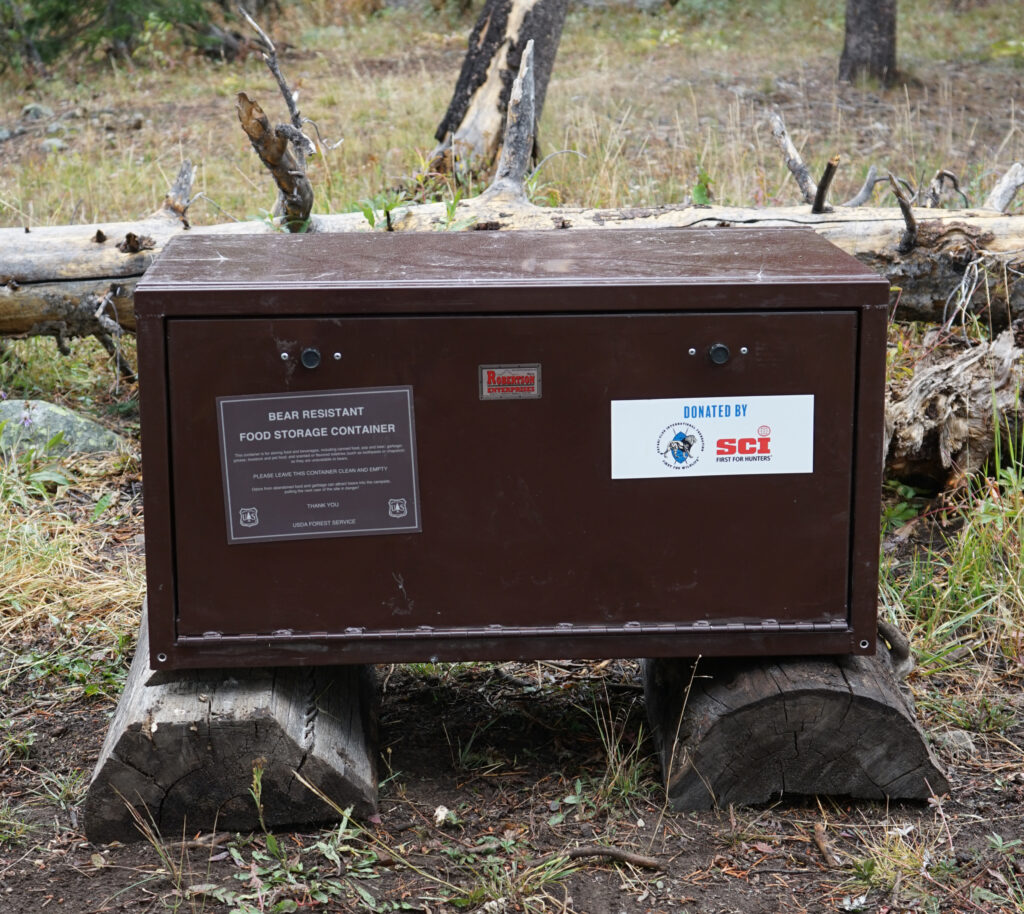Bear Conservation Strategy Includes Reducing Bear Conflicts
Originally published in the May/June issue of Safari Magazine.
By Maria Davidson, SCIF Conservation Program Manager
Safari Club International Foundation has identified science-based management of bear populations as a primary focus of its conservation programs worldwide.
Bears and the sustainable management of bear populations in North America have been a focus of SCIF conservation efforts for over two decades, including projects with brown bears in Alaska, grizzly bears in Alberta and British Columbia, and black bears across the United States.
Bears are among the most iconic wilderness species and are a symbol of success in the North American Model of Wildlife Management. Also, as one of the few truly dangerous game species in North America, brown and grizzly bears are aspirational species for many hunters.
With that in mind, SCIF created a bear conservation strategy driven by two primary components:
1)Provide scientific data to inform management decisions, and
2)Assist states and provinces with the human-bear conflicts that inevitably occur when expanding bear populations and human activity overlap.
The need for the first component is obvious to any hunting conservationist because reliable, scientifically gathered data is necessary for sustainable harvest where appropriate. Good population numbers can lead to hunting opportunities.
The reasoning behind the second component is not as obvious to most. To fully understand it, one must start by understanding that hunters are the original conservationists and, as such, we want to see bears persist on the landscape in suitable habitats where they can thrive and be enjoyed by all outdoor enthusiasts.
Bears, however, are challenging to live with and don’t always make good neighbors. If we wish to have them persist in sustainable numbers, we must accept the shared responsibility to help the ranchers and landowners who live with them. It’s the neighborly and responsible thing to do!
But there’s another, just as important and ultimately more impactful reason to be involved in bear conflict mitigation. I once had a mentor who told me the world was ruled by those who showed up and put in the work.
As hunters, we need to show up and do the work if we want to have a voice in grizzly bear management down the road. Bear conflict management comes in many different shapes and sizes, but it’s all expensive, and state agencies have spent millions on this problem.
To be a true partner, hunters must show up and pitch in where the work must be done. Animal rights organizations have seen the value in this and are actively engaging with the public while conducting conflict mitigation. We need to do the same.
SCIF is currently working on several conflict mitigation projects. Through a grant agreement with Montana Outdoor Legacy Foundation, SCIF is supporting agency-led efforts to minimize and mitigate grizzly bear conflicts with livestock producers on the Montana front range.
The scope of this project includes exclusion techniques, such as electric fencing and bear-proofing efforts for grain bins, as well as activities to reduce livestock depredation. Outreach and education efforts about living and hunting safely around grizzly bears is another component of this project.

We have partnered with CampFire Conservation Fund, Wyoming Game and Fish Department, Shoshone National Forest, and American Bear Foundation to conduct bear spray trainings and giveaways in 2023.
Three events will take place before the popular shed-hunting season, and four more are scheduled just prior to the opening of bow season. The focus of this project is to raise awareness about the importance of not only carrying bear spray, but also being prepared to use it by practicing ahead of time.
In another important Wyoming project, SCIF partnered with the Wyoming Outfitters and Guides Association. Thanks to a grant from the Wyoming Community Foundation Memorial Bear Fund, SCIF purchased bear-proof food storage boxes for the Shoshone National Forest.
These food storage boxes allow both resident and nonresident hunters to comply more easily with bear-proof food storage requirements in the National Forest while hunting in the backcountry.

Of course, SCIF is also helping with scientific research. A great example of the recent population research we have supported lies farther north in Canada.
SCIF has partnered with the Government of Yukon Department of Environment and the Yukon Outfitters Association to support a project on the Klondike Plateau that will eventually establish a province-wide population and density estimate from which to base future management decisions.
Both population research and human/bear conflict mitigation are key to SCIF’s bear strategy to ensure that bear populations are responsibly managed and that hunters have bear hunting opportunities in the long run.
SCI members and chapters who want to be a part of SCIF’s bear work can contribute in various ways. Visit safariclubfoundation.org or email SCIFoundation@safariclub.org to learn more.
Maria Davidson is SCIF’s Conservation Program Manager.

